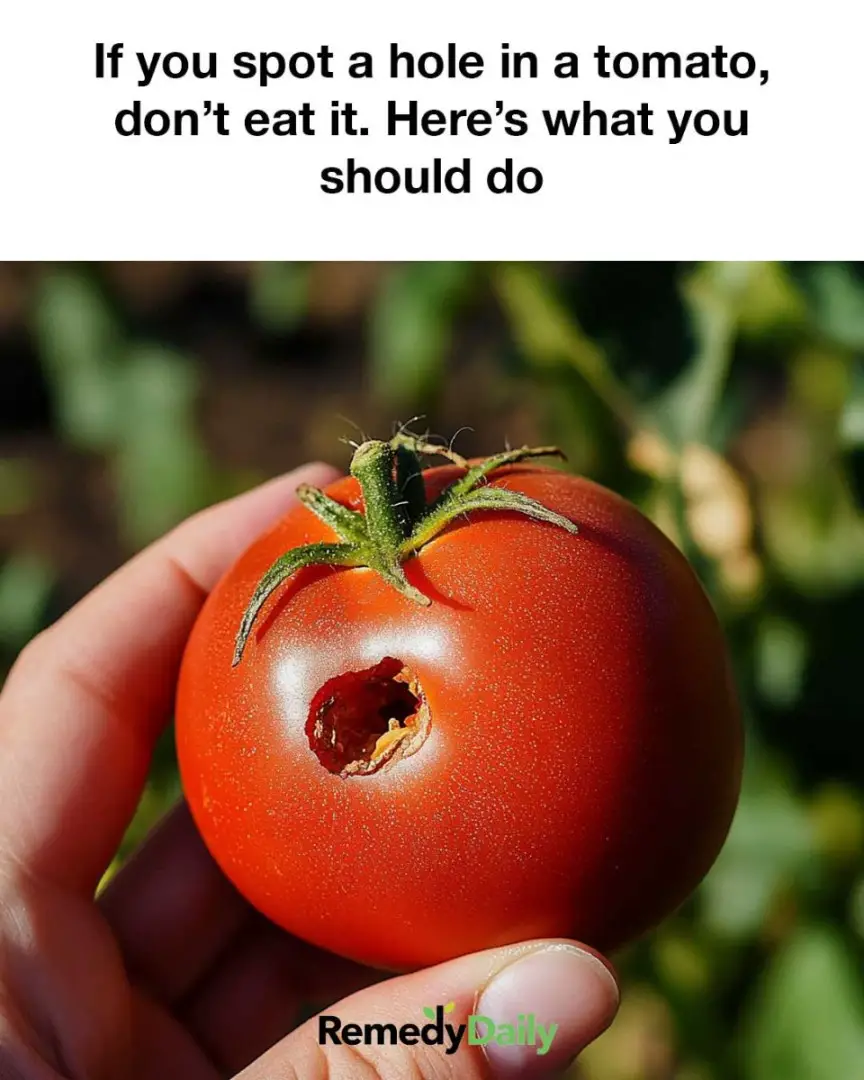That Tomato With a Hole? Here’s What’s Really Going On—and How to Handle It Like a Pro
You reach for a ripe, juicy tomato—only to find it’s perforated, as if purposefully punched through. It’s alarming, right? “I must’ve missed the memo,” you might think. But before tossing it out, let’s unpack the surprising reasons tomatoes develop holes, how to determine if they’re safe, and what you can do to prevent it in your garden or kitchen.
Why Holes Form in Tomatoes: A Hands-On Guide
Tomato holes stem from a blend of nature, environment, and mishandling—far more nuanced than garden gossip would suggest.
1. Insect Intruders
Tiny marauders like tomato fruitworms, hornworms, or even stink bugs are often at play. These pests bore into fruit in search of nourishment—leaving behind small, often neat holes—sometimes without visible external damage beyond the puncture itself.The Flavorful Journey
2. Environmental Shock
Tomatoes are sensitive to inconsistencies. Sporadic watering or nutrient imbalance can stress the fruit, causing skin to split or crack. What appears as a hole might actually be fragile flesh opening with a twist, tear, or collapse.The Flavorful Journey
3. Fungal or Disease-Based Lesions
Certain conditions—like blossom end rot or fungal infections—create necrotic spots or weakening areas in the tomato skin. These become soft, cavitated patches that can mimic irregular holes.The Flavorful Journey
4. Mechanical Mishaps
Physical damage—whether from rough handling, collisions with tools, or pressure against surfaces—can puncture tomatoes mid-growth or post-harvest. These punctures may expand later, turning into noticeable holes.The Flavorful Journey
Is It Safe to Eat a Tomato with a Hole?
Here’s the practical approach:
- Check the hole’s depth and condition:
- If it’s small, clean, and surrounded by healthy-looking flesh, you can usually trim it away and still enjoy the rest safely.
- If it shows signs of mold, softness, discoloration, or an off odor, it’s best to discard it—mold spreads quickly, even if it’s not visible at first glance.The Flavorful Journey+2delish.com+2
- Use your senses:
- Smell: If there’s any hint of decay, err on the side of caution.
- Feel: A firm, intact tomato with only a tiny surface hole? That’s a good sign.
- Sight: Keep those defect-free zones intact and enjoy the tomato with peace of mind.
How to Prevent Tomato Holes—and Save Smart Produce
Whether you’re gardening, buying, or cooking, preventative strategies go a long way.
In the Garden:
- Inspect plants regularly for pests and signs of disease. Early detection is your best line of defense.
- Keep watering consistent—fluctuations stress fruit, making skin more prone to splitting.
- Handle fruit gently—whether harvesting or storing, avoid unnecessary bumps and pressure.
At the Market:
- Choose tomatoes with smooth, intact skin—even minor dents can lead to later holes.
- Examine around the stem and blossom ends for tiny lesions or softness.
In the Kitchen:
- Trim away minor holes carefully—remaining flesh is likely fine to eat.
- Cook damaged tomatoes: Roasting or stewing worked, healthy parts can make rich sauces or soups, repurposing that unexpected imperfection.
Expanded Tips & Context (Beyond the Original Article)
Practical Use Ideas:
- Roast imperfect tomatoes—remove surrounding tissue, then drizzle the good flesh with olive oil, garlic, and herbs. Baked halves make flavorful additions to pasta or sandwiches.
- Turn into a quick sauce—blend salvaged tomato portions with spices or onion for a fresh, seasonal dressing.
- Support local farms—knowing these are usually discarded, ask your market or CSA if slightly damaged produce is available at a discount.
Additional Insights:
- Holes from insects tend to be neat and round, while those from cracking or disease are patchy or irregular.
- Blossom end rot is often tied to calcium imbalances—supplementing soil appropriately can reduce the risk.
- Irrigation methods like drip lines (vs overhead sprinklers) help minimize moisture variability and reduce related damage.
Final Thoughts
“I must’ve missed the memo”—that tomato with a hole doesn’t always mean hazardous waste. In many cases, the culprit is a harmless snacking insect or accidental crack—both often fixable by trimming. And even if it’s more damaged, there’s still a generous culinary life for that tomato in the form of roasted dishes, sauces, or soups.

